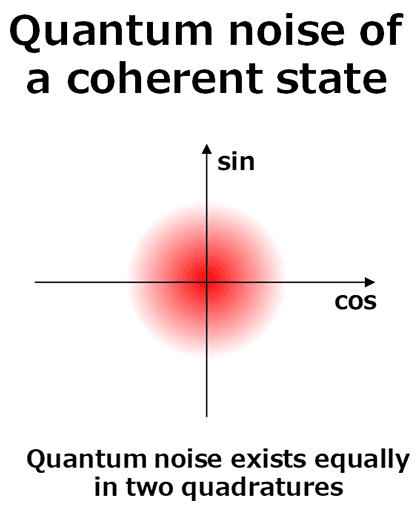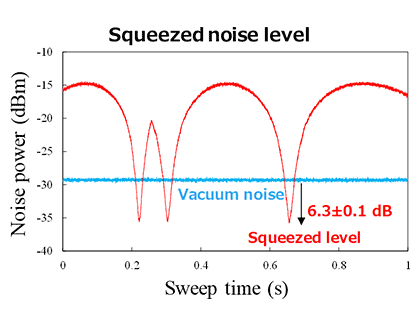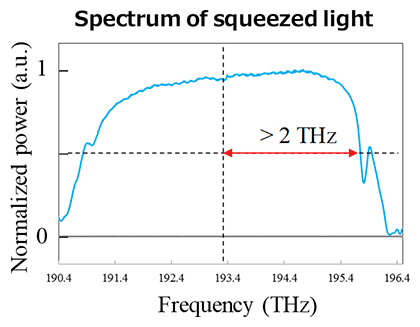Microsoft ends support for Internet Explorer on June 16, 2022.
We recommend using one of the browsers listed below.
- Microsoft Edge(Latest version)
- Mozilla Firefox(Latest version)
- Google Chrome(Latest version)
- Apple Safari(Latest version)
Please contact your browser provider for download and installation instructions.
March 30, 2020
Nippon Telegraph and Telephone Corporation
The University of Tokyo
Japan Science and Technology Agency (JST)
High-performance quantum light source for an optical quantum computer chip
– Major progress toward the realization of large-scale high-speed universal quantum optical processing at room temperature –
Nippon Telegraph and Telephone Corporation (NTT, President & CEO: Jun Sawada, Chiyoda-ku, Tokyo) in cooperation with the University of Tokyo (President: Makoto Gonokami, Bunkyo-ku, Tokyo) has succeeded in realizing a high-performance quantum light source (squeezed light source) (*1), which will be indispensable for future universal optical quantum processing chips operating at room temperature. Squeezed light has compressed quantum noise (*2) and can be used to create quantum entanglement (*3). The squeezed light source for a quantum processing chip should output continuous-wave wide-bandwidth high-level squeezed light.
Squeezed light is generated by exciting nonlinear optical crystals (*4) with pump light. In conventional methods, an optical cavity is used to get high-level squeezed light. However, the cavity structure limits the bandwidth of squeezed light to several gigahertz. A nonlinear optical waveguide, which can generate squeezed light without an optical cavity, is expected to be useful for generating wideband squeezed light. Although a nonlinear optical waveguide can provide terahertz-order bandwidth, the compression rate of quantum noise was only about 37% with continuous-wave light.
We have succeeded in compressing more than 75% of the quantum noise by using a high-performance nonlinear optical waveguide fabricated by NTT and a high-quality optical control and measurement technology of the University of Tokyo. This value is greater than 65%, which is the compression rate needed to produce a two-dimensional cluster state (*5), which can perform any kind of quantum processing. Furthermore, the squeezed light showed terahertz-order bandwidth. This result can reduce the distance between flying optical quantum bits to about 300 microns and will lead to optical quantum processing on optical chips such as those developed by NTT for optical communications applications. It is also expected to realize a high-speed quantum computer because it can increase the clock frequency of calculations.
These results will be published as a "Featured Article" in the U.S. scientific journal APL Photonics on March 30, 2020. That article is also chosen as a highlight (Scilight) of the American Institute of Physics (AIP). This research was supported by Strategic Basic Research Program CREST of the Japan Science and Technology Agency (JST).
Summary
- We have developed a wide-band, high-performance quantum light source (squeezed light source) that is indispensable for universal optical quantum computer chips that can operate at room temperature.
- The broad band of terahertz order has made it possible to shorten the optical length of optical quantum bits to about 300 microns, opening up the possibility of quantum computers on optical chips like those NTT has developed for use in optical communications.
- This light source can also increase the clock frequency of the quantum computer itself, so high-speed quantum computation is expected.
Background
Quantum computers are being developed around the world because they can solve specific problems much faster than conventional computers. In particular, with the aim of realizing large-scale universal quantum computing, there is growing expectation for optical quantum computers that use a measurement-based quantum computing. In this method, a two-dimensional cluster state (*5) is prepared in advance for superposition of all quantum calculations. Once some of the clustered qubits are measured, the remaining qubits are manipulated and arbitrary calculations are performed. Recently, a quantum entanglement with more than 10,000 qubits has been achieved at room temperature by using time-domain multiplexing with optical delay line interferometers (Reference 1).
In this method, squeezed light is used as a quantum resource. In particular, continuous-wave wideband squeezed light enables us to define qubits with short intervals on the time axis and is useful for enlarging the entanglement state, speeding up information processing, and shrinking the optical system. For example, terahertz squeezed light enables us to define a qubit with an optical length of approximately 300 microns, so that the optical delay lines required for time domain multiplexing can be integrated into an optical chip. It also enables terahertz clock operation, which makes the quantum computer itself faster.
Squeezed light is generated by nonlinear optical effects. In order to improve the compression ratio of the quantum noise, a nonlinear optical crystal has been installed in an optical cavity to enhance the nonlinear optical effect. A quantum noise compressibility of more than 97% has been achieved by improving the cavity structure. Bandwidth is limited to several gigahertz because of the cavity structure, however, making it difficult to take advantage of the potentially terahertz-order bandwidth of light. Therefore, for wideband squeezed light, it is necessary to generate squeezed light by using a single pass configuration without an optical cavity. Since the nonlinear efficiency of a single-pass configuration for a continuous wave is generally low, the strong nonlinear optical effect due to the waveguide structure has been used. The generation of squeezed light by waveguides has been studied for the past 30 years, however, due to the difficulty of fabricating nonlinear optical waveguide devices and their material properties, the reported quantum noise compressibility is only about 37%, which is smaller than the 65% required for two-dimensional cluster state generation.
Research Result
We have succeeded in developing a high-performance continuous-wave squeezed light source (Fig. 1) that will be necessary for the realization of future universal optical quantum computer chips. The squeezed light is required to have both broad bandwidth and high noise compressibility, however, none of the studies so far have been able to satisfy both requirements at the same time with continuous-wave light. A nonlinear optical device that was developed by NTT (Fig. 2) has now realized a wide-bandwidth and high-compressibility continuous-wave quantum light source. The wide bandwidth allows us to define the length of flying optical qubits as less than 300 microns, enabling operation within an optical chip. At the same time, it is also possible to increase the clock frequency of the optical computer itself. Furthermore, the noise compression ratio achieved this time is sufficient to generate large-scale quantum entanglement states, which will greatly accelerate future optical quantum computer research and development.
Future Development
We will demonstrate the generation of large-scale entanglement states and various optical quantum operations for the realization of universal quantum computers using this wideband squeezed light. Furthermore, we will realize integrated optical quantum processing chip (Fig. 3) making full use of the optical integrated device technology cultivated at NTT for optical communication.
Technical points
Various methods have been used to generate squeezed states, but it has been difficult to achieve both broadband and high-level squeezing for continuous-wave light. To achieve high-level squeezing (Fig. 4), a highly efficient nonlinear optical process is required. In many cases, nonlinear optical crystals have been installed in optical cavities to increase their efficiency. Although this method achieved a high quantum noise compression rate of 97% in 2016, the bandwidth of the squeezed light was narrow due to the cavity-based configuration of the light source.
Here, a single-pass nonlinear optical process without a cavity structure is expected for wideband squeezed light. Two methods have been often used to obtain high-efficiency nonlinear optical process with a single-pass configuration (Fig. 5). One uses ultrashort pulses with high peak power as pump light. In this method, wideband squeezed light is generated instantaneously, but a generation rate is limited to the duty ratio of the ultrashort pulses. Hence, that method does not lead to shortening of the delay line or improvement of the clock frequency. The second method uses nonlinear optical waveguides. Even with single-pass and continuous-wave excitation, the optical confinement effect of the waveguide structure makes it possible to increase the nonlinear optical effect. Squeezed light generation using nonlinear optical waveguides has been studied for about 30 years (since around 1990), and its quantum noise compressibility has remained at around 35%. This can be attributed to the difficulty in processing nonlinear optical materials and the inability to obtain a high-performance waveguide.
So far, NTT has been developing a periodically poled lithium niobate (PPLN) waveguide as a nonlinear optical device for optical fiber communication. At this time, by using our developed waveguide (Fig. 2) we have achieved a quantum noise compressibility of 75% (Fig. 6) for continuous-wave light. We also confirmed that the bandwidth of the squeezed light was over 2 terahertz (Fig. 6). For the measurement of squeezed light, we used the high-precision light control and detection technique of the University of Tokyo (Fig. 7).
Attachments
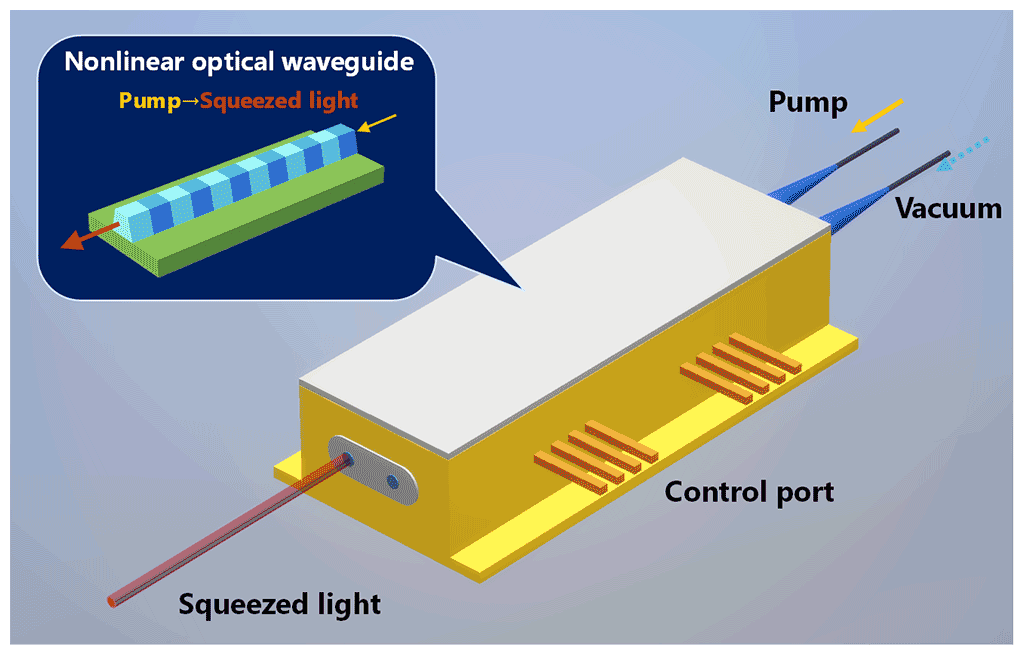 Figure 1 Schematic view of the light source we developed.
Figure 1 Schematic view of the light source we developed.
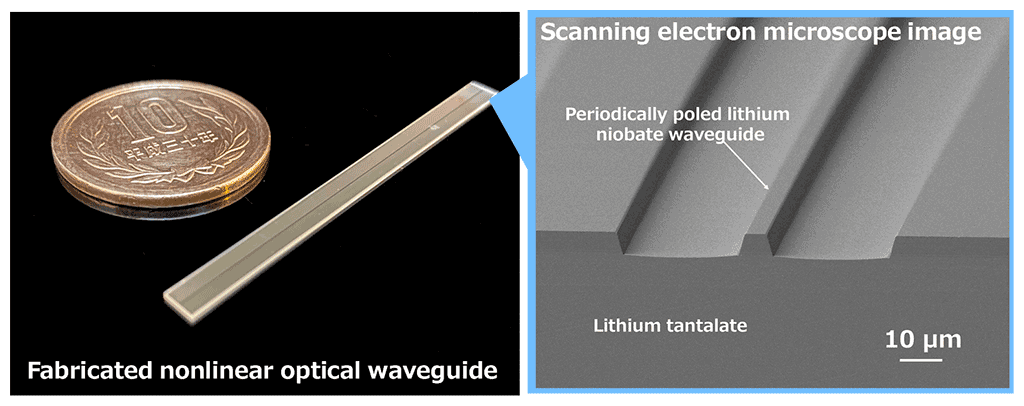 Figure 2 Images of fabricated nonlinear optical waveguides.
Figure 2 Images of fabricated nonlinear optical waveguides.
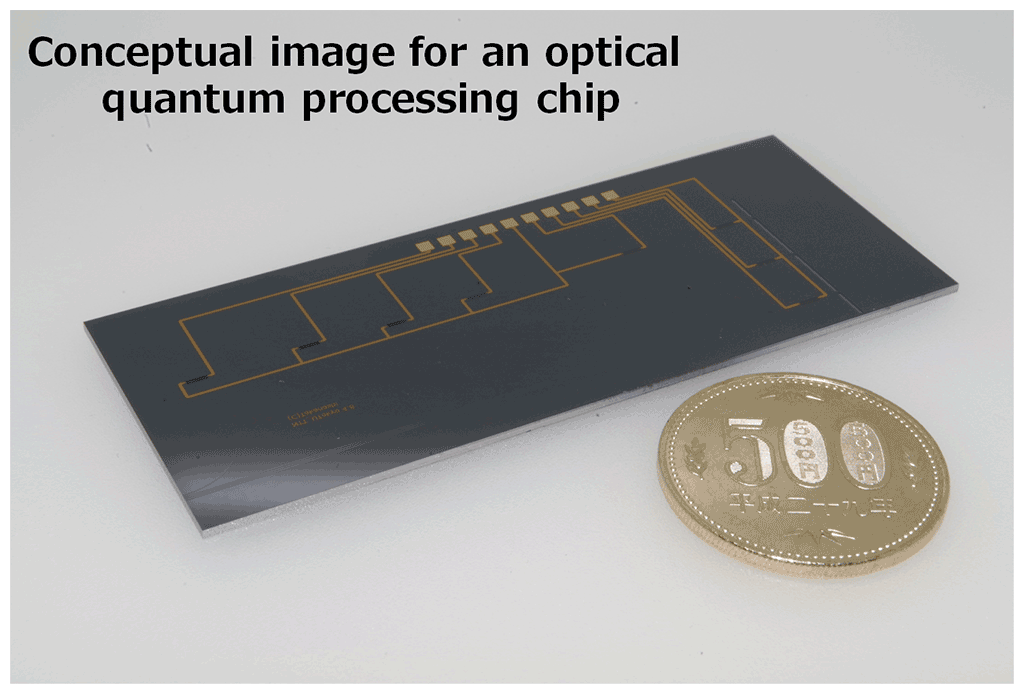 Figure 3 Conceptual image for an optical quantum processing chip.
Figure 3 Conceptual image for an optical quantum processing chip.
Figure 4 Vacuum noises for coherent and squeezed states.
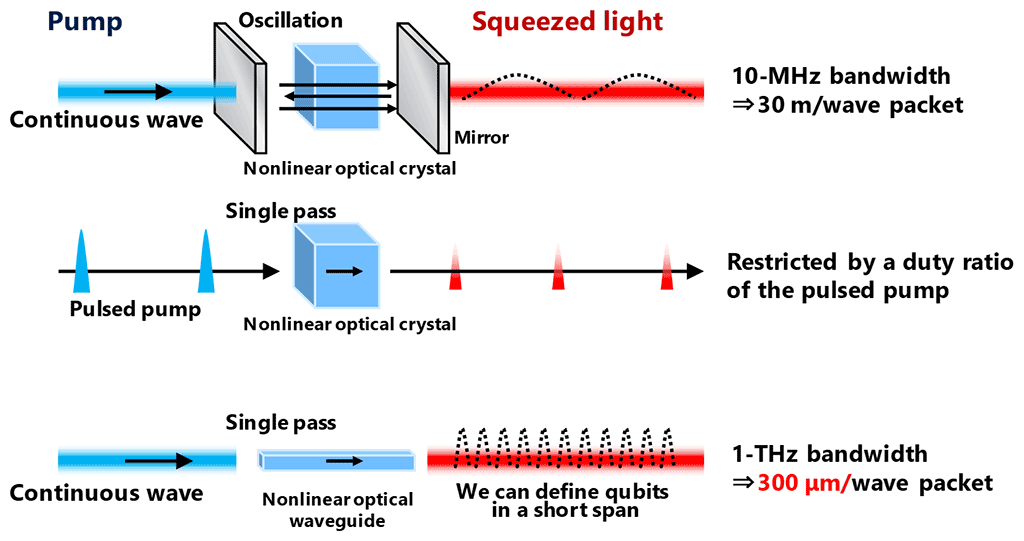 Figure 5 Various methods used to obtain squeezed light.
Figure 5 Various methods used to obtain squeezed light.
Figure 6 Experimental results for a squeezing level and a bandwidth.
 Figure 7 Experimental setup for squeezing level measurement.
Figure 7 Experimental setup for squeezing level measurement.
Glossary
- Squeezed light
Squeezed state of light. One quadrature of the squeezed state has smaller quantum noise than that of a coherent state. To obey Heisenberg's uncertainty relation, the other quadrature has larger quantum noise than that of the coherent state. - Quantum noise
Quantum noise is an inevitable noise referring the uncertainty relation of physical quantities. For example, a classical light, that is coherent light form a laser, has comparable quantum noises for its both quadrature amplitudes. This noise is known as shot noise. - Quantum entangled state
A quantum entangled state is one of physical state that a pair or group of particles have strong correlations each other even when the particles are separated by a large distance. Quantum states of each particle cannot be described independently. Quantum entanglement is one of the most important features of quantum technologies. - Nonlinear optical crystal
A nonlinear optical crystal is an optical crystal whose refractive index is changed as an injected light intensity. Using this feature, we can control light by another light. - Two-dimensional cluster state
A two-dimensional cluster state is a universal quantum entangled state that can be implemented any kind of quantum calculations. This state is the most important resource for one-way quantum computation which realize universal quantum operation. In 2019, a two-dimensional cluster state with over 10,000 qubits were realized by prof. Furusawa's group (Ref. 1).
Reference
1:W. Asavanant, et al.,"Generation of time-domain-multiplexed two-dimensional cluster state," Science 366, 373 (2019).
Publication Information
| Journal : | APL Photonics |
|---|---|
| Title: | Continuous-wave 6-dB-squeezed light with 2.5-THz-bandwidth from single-mode PPLN waveguide |
| Authors: | Takahiro Kashiwazaki, Naoto Takanashi, Taichi Yamashima, Takushi Kazama, Koji Enbutsu, Ryoichi Kasahara, Takeshi Umeki, and Akira Furusawa |
| DOI: | 10.1063/1.5142437 |
Contact information
Nippon Telegraph and Telephone Corporation
NTT Science and Core Technology Laboratory Group, Public Relations
E-mail: science_coretech-pr-ml@hco.ntt.co.jp
Tel: +81-46-240-5157
The University of Tokyo
Graduate School of Engineering, Public Relations
E-mail: kouhou@pr.t.u-tokyo.ac.jp
Tel: +81-3-5841-6295
Public Relations Division
Japan Science and Technology Agency (JST)
E-mail: jstkoho@jst.go.jp
Tel: +81-33-5214-8404
Information is current as of the date of issue of the individual press release.
Please be advised that information may be outdated after that point.
NTT STORY
WEB media that thinks about the future with NTT



